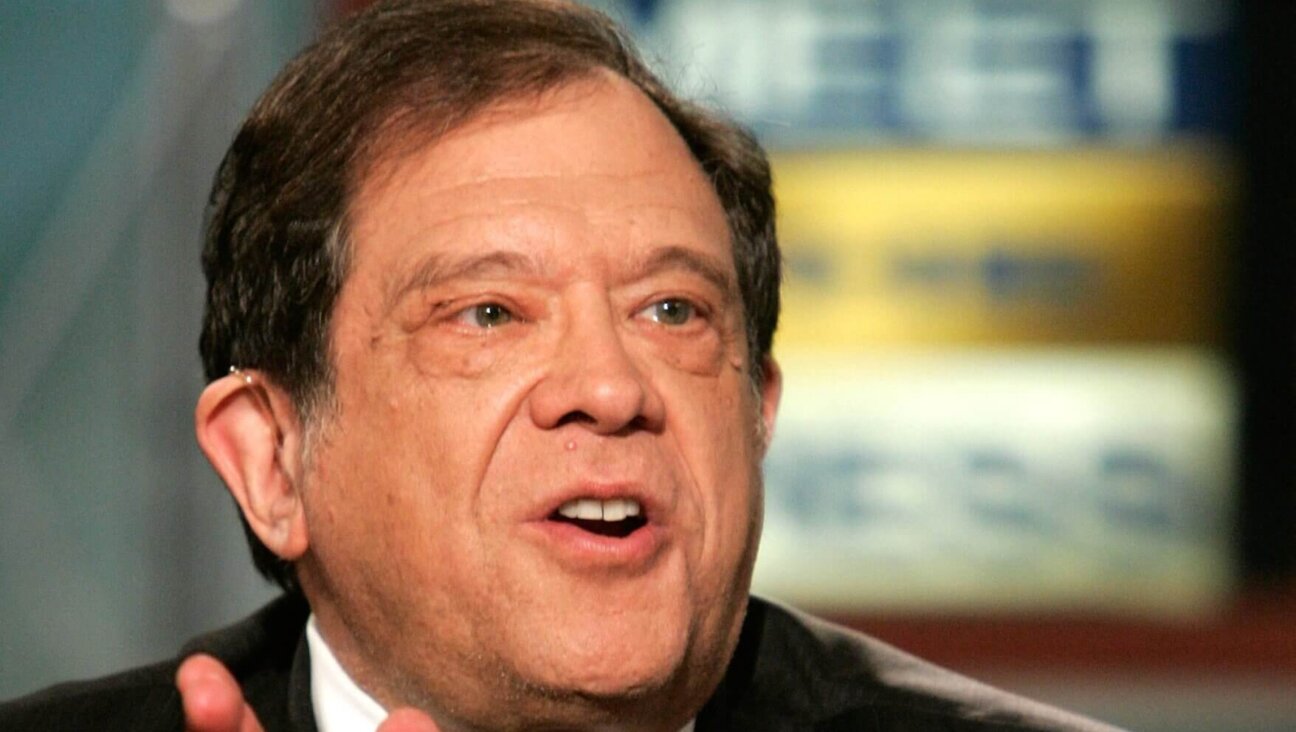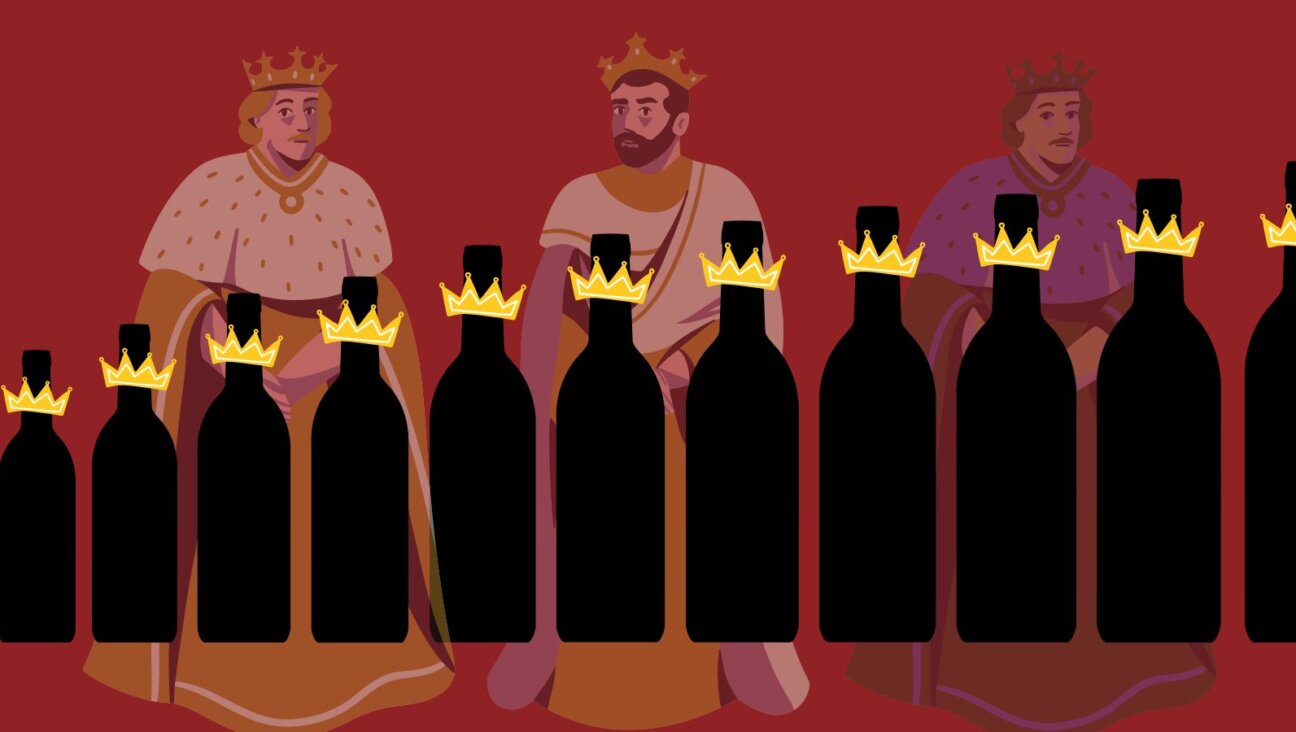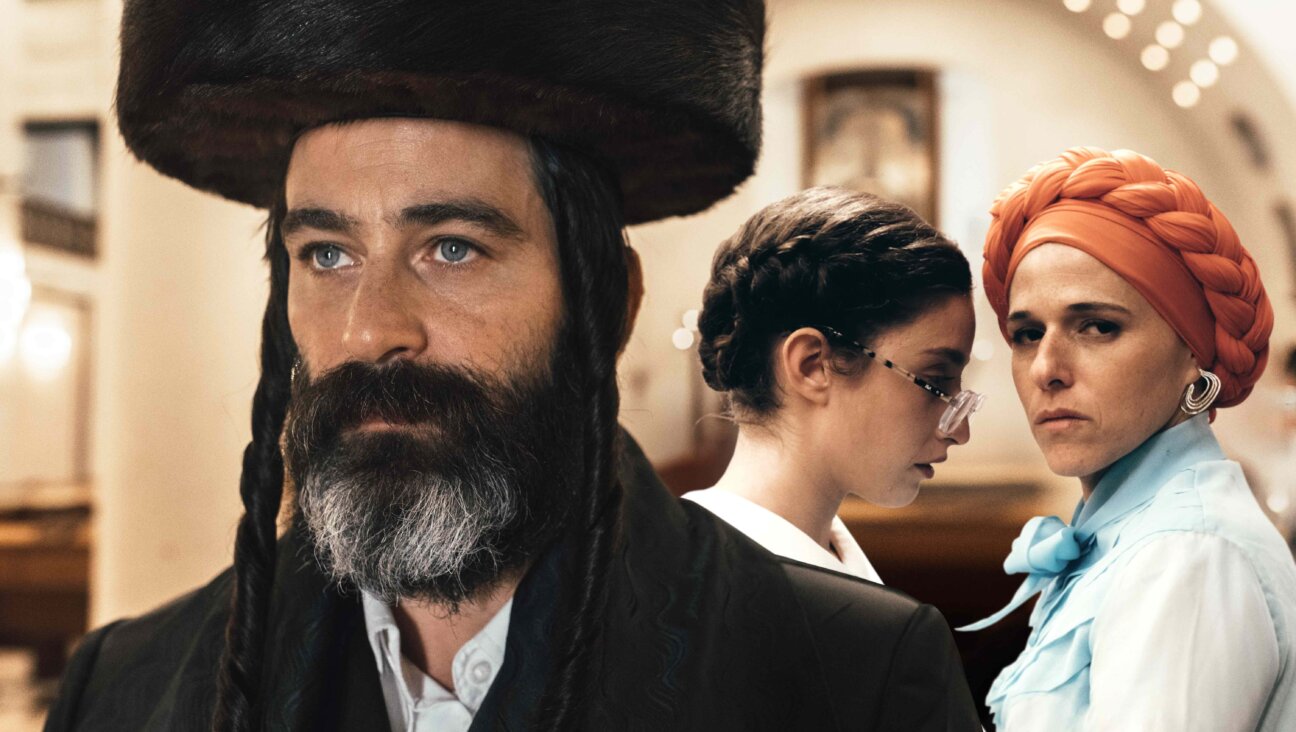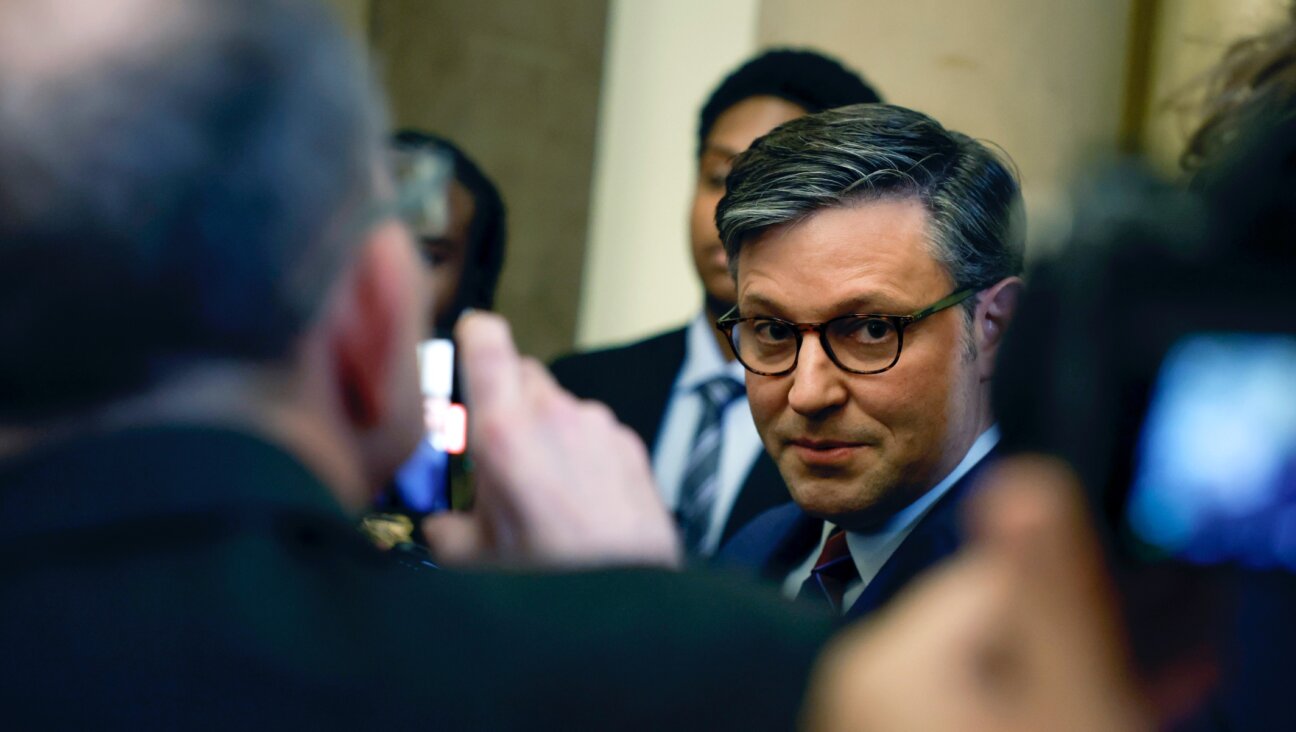The Great White (Jewish, Gay) Way
Watching the PBS documentary “Broadway: The American Musical” is like watching “Cats”: You meet lots of interesting characters, you hear several catchy tunes and you enjoy a few hours of lighthearted entertainment. But when the lights come up at the end, the whole experience feels like less than the sum of its parts.
That’s not to say that “Broadway” isn’t a pleasure to watch. Like “Cats,” the ambitious series offers enough glittering spectacle and stage magic to hold the toughest critic’s attention. It simply isn’t worth a standing ovation. Partly, this is because the subject of the American musical already has been so thoroughly critiqued and analyzed that the basic history, though presented competently, is hardly a revelation. But mostly, the series falls short because as a conventional television documentary, “Broadway” fails to capture the breadth and depth of its subject.
There is much to recommend the six-part documentary, hosted by Julie Andrews, which airs nationally beginning October 19. The early episodes of the largely chronological miniseries are particularly rich with historical footage, pictures and personal anecdotes about early 20th-century stage figures, from Fanny Brice to Groucho Marx. (One clip shows them singing together — in Yinglish, no less.) Interviews with theatrical historians and critics, actors and directors, and with relatives of late greats like Florenz Ziegfeld and the Gershwins add texture to the stories. And the music, of course, will have viewers singing along, particularly delighted at glimpses of rarely seen productions, even though many scenes are taken from television showcases or from film adaptations. This isn’t a series for persnickety show queens competing to see who knows the most trivia or the most obscure songs; it’s mostly a hit parade of Broadway’s greatest and best-known gems, and as such, the series is accessible for most audiences.
While “Broadway” is thorough, it isn’t particularly daring in its execution. Brief biographical investigations focus on the usual suspects, from singer Al Jolson to producer Cameron Mackintosh. The shows that are featured prominently are likewise fairly predictable, from “Show Boat” to “Oklahoma!” to “The Lion King.” And the dominant historical narrative — the only narrative presented — is already well known to theatrical enthusiasts: The form of the musical evolved roughly a hundred years ago from American vaudeville and European operetta, first as glitzy revues and only later as book musicals; it reached its zenith in midcentury, and has been deconstructing and reinventing itself ever since (think “Hair, “Company,” “A Chorus Line,” “Rent”), despite constant rumors of the genre’s death. Along the way, recent British imports notwithstanding, the musical became a quintessentially American art form, drawing on the talents of immigrants and outsiders to define what New Yorker theater critic John Lahr, in the series, calls “the culture of optimism.”
In terms of format, too, “Broadway” plays it safe. Television documentaries have developed a certain style in recent years, thanks largely to celebrated directors Ken and Ric Burns, who have redefined the field, winning wide audiences and encouraging many imitators. Whether looking at jazz or baseball or the Civil War, the Burns brothers have learned that breaking down large subjects into bite-sized tales of personal tragedy or individual heroism makes unwieldy stories easier to digest. “Broadway” creator/producer/director Michael Kantor recently worked with the brothers on other PBS projects: Ric’s “New York: A Documentary Film” and Ken’s “The West.” Perhaps as a result, “Broadway” takes on a tone familiar to viewers of those other projects — the slow pan over black-and-white stills, the voice-over reading from personal letters, the talking-head interviews with modern-day commentators — with all the attendant pluses and minuses of that format.
Television’s most powerful tool is the close-up, when the camera pulls in tight on someone’s face. The soap opera “General Hospital” wouldn’t work without wordless but revealing reaction shots; “The Price Is Right” would fall flat if we couldn’t see the exuberance of a prize-winner writ large, and “Monday Night Football” would be virtually worthless if not for the camera’s ability to zoom in on the action.
Theater, on the other hand, is a big-picture medium. There’s no place to hide; even from prime orchestra seats, patrons maintain a certain distance that ensures they always can see every actor on stage in one panoramic view, even when someone else takes the spotlight for an 11 o’clock solo number.
This disconnect between television and theater explains why “Broadway” feels strangely unsatisfying. Despite its smooth presentation and overall mastery of the subject, “Broadway” views American musicals in close-up — focusing on the most prominent movers and shakers, the most successful shows — and thus frequently loses the big picture. There’s more to Broadway than glamorous hoofers doing eight shows a week and clever tunesmiths scrambling to write the next showstopper. Behind the scenes, behind “Broadway,” is a story of social, cultural, political and artistic change — a deeper story that the series isn’t up to telling.
Vladimir Horowitz once famously quipped that there are three types of pianists: homosexual pianists, Jewish pianists and bad pianists. It’s a short leap to extend his theory to musical composers. Certainly the men — and they are nearly all men — behind the American musical fall overwhelmingly into these categories. (Indeed, they fall frequently into two or occasionally all three at once.) Yet despite the fact that “Broadway” brings up the Jewish background of many individual composers, and the sexual orientation of several gay composers, the series never notices the patterns.
This omission seems clear enough when examining one man at a time, but when given a list — Irving Berlin, Marc Blitzstein, George Gershwin, Richard Rodgers, Lorenz Hart, Jerry Herman — it becomes almost obvious to ask if it was merely coincidental that they all were Jewish. Indeed, at times, avoiding the subject takes a concerted effort. “West Side Story” brought together Arthur Laurents, Stephen Sondheim and Leonard Bernstein. Three Jewish gay men created the all-American musical about heterosexual, Christian romance. Were they simply three individuals, or was something larger, something culturally significant, drawing Jews and gay men to the theater? The subject begs the question, but the documentary never answers.
“Broadway” occasionally steps back to provide some cultural context or sociological analysis, delving into women’s roles onstage or examining the impact of the Depression or mentioning the devastation that AIDS visited on the industry. But these moments are too rare, and the documentary instead unfolds as a chronology of hit shows stringing together a series of what could be miniature episodes of A&E’s “Biography.”
The history of the American musical is as textured as the music in any good show, with daring solos and stunning collaborations, dramatic fade-outs and glorious reprises, dissonant key changes and recurring motifs. Sometimes, by focusing on the individual notes, “Broadway” misses the grander score.

I hope you appreciated this article. Before you go, I’d like to ask you to please support the Forward’s award-winning journalism this Passover.
In this age of misinformation, our work is needed like never before. We report on the news that matters most to American Jews, driven by truth, not ideology.
At a time when newsrooms are closing or cutting back, the Forward has removed its paywall. That means for the first time in our 126-year history, Forward journalism is free to everyone, everywhere. With an ongoing war, rising antisemitism, and a flood of disinformation that may affect the upcoming election, we believe that free and open access to Jewish journalism is imperative.
Readers like you make it all possible. Right now, we’re in the middle of our Passover Pledge Drive and we need 500 people to step up and make a gift to sustain our trustworthy, independent journalism.
Make a gift of any size and become a Forward member today. You’ll support our mission to tell the American Jewish story fully and fairly.
— Rachel Fishman Feddersen, Publisher and CEO
Join our mission to tell the Jewish story fully and fairly.
Our Goal: 500 gifts during our Passover Pledge Drive!
























